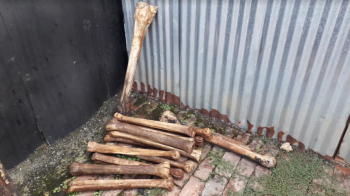Von Gruff
KNIFE MAKER
My agent sent me an email this morning asking if I was interested in this giraffe bone. There is already 4 bones and 4 impala horns going to be sent but these bones are extras. I have set out to do two handles from the bone I have and in both cases one of the bones split with one when I drilled one of the pin holes and the other at the completion of cutting it to size so it looks like I am going to have to invest in a stabilising vacuum chamber
So the question is where do I find the chamber and the vacuum pump. There must be an outlet for them somewhere that one of you could point me toward. I have heard of guys using glass but have been advised that there is some type of acrylic that is used for the chamber to withstand the vacuum and is more resilient than glass. Some things I am prepared to potter round and make do but for this where there is a lot to be done I think I want to get something that is going to work without any head scratching from me.

So the question is where do I find the chamber and the vacuum pump. There must be an outlet for them somewhere that one of you could point me toward. I have heard of guys using glass but have been advised that there is some type of acrylic that is used for the chamber to withstand the vacuum and is more resilient than glass. Some things I am prepared to potter round and make do but for this where there is a lot to be done I think I want to get something that is going to work without any head scratching from me.



